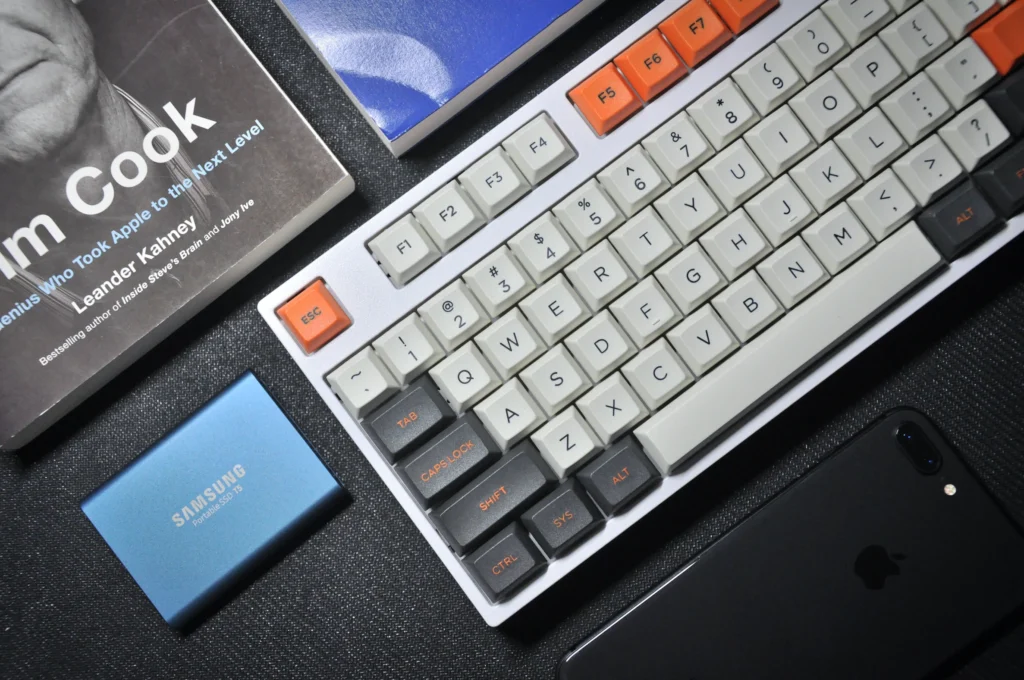Table of Contents
Mechanical keyboards come in a myriad of different shapes and sizes, some of which happen to be more popular — and more appropriate for certain use-cases — than others. And, to make things even more complicated, all keyboard manufacturers are trying their absolute hardest to convince you, the buyer, that their option is, in fact, the best possible choice.
It’s easy to understand how one can feel a bit overwhelmed, especially in today’s day and age where a new keyboard seems to be popping up on a weekly basis. Fortunately, once you strip away all the lingo and marketing hogwash, everything becomes rather clear.
Let’s go over the most popular keyboard form factors before explaining which ones benefit gamers the most:
Keyboard Form Factors for Gaming — And Other Use-cases
The most popular, widespread keyboard formats are the following: full-sized, TKL (Ten Key Less, also referred to as 80% or 87% ), 75%, and 60%. There are many other formats, however, like 65%, 40%, and so on and so forth.
These are all unique and different takes on existing conventions, and some of them are also very niche at heart.
The percentage number refers to the total number of keys that any particular form factor has when compared to a full-sized model (that’s the reference point). The lower the percentage, the smaller the keyboard.
With a TKL keyboard, you’re essentially only losing out on the number pad — hardly a sacrifice (for most people, at least). This makes them the absolute safest option for gamers and creatives alike. The 75% form factor takes things a bit further. It’s the smallest you can go without making any kind of sacrifice function-wise.
65/60% keyboards, on the other hand, are a lot more austere. The former has 68 keys whereas the latter comes with 61. They don’t have a Function row and 60% models don’t even have any Arrow keys. For some, a dealbreaker; for others, a sought-after boon.
It’s a really popular format for hardcore gamers and those who want as much desk space as possible, but it does come with a myriad of different limitations.
Smaller ≠ Cheaper
Unfortunately, smaller keyboards often come with higher price tags. The fact that they’re easier to produce means very little as they’re targeted primarily at those who are super serious about gaming — and are, therefore, willing to invest more than the “average Joe” on their peripherals.
Despite not having a dedicated Function row, those keys can still be accessed by holding the Fn key and then pressing on the corresponding number — Fn + 1 for F1, Fn + 2 for F2, and so on and so forth.
Which Keyboard Form Factor Should I Choose For Gaming?
That’s a very tough question to answer as it all depends on your personal preference and, frankly, whether you’re doing anything else on your computer other than gaming. If you’re a gamer through and through and if that’s your primary use-case, then going with a TKL variant would provide you with the most well-rounded experience.
These keyboards are compact enough not to get in the way whilst gaming; they also have all the possible keys one might need during one’s day-to-day usage. Ditto for the 75%.
The 65% form factor is also mighty alluring. It’s not as well-rounded as TKL, but it sure does have its benefits. For shooters and fast-paced multiplayer titles, its small, petite frame sure does serve as a tremendous boon.
You want to have as much space for moving your mouse as possible — and a 65%/60% keyboard will give you just that. It doesn’t have a function row but that, too, can be circumvented by using the Function key (Fn) in conjunction with the numbers row. It’s not ideal, but most folks couldn’t care less, especially when it comes to gaming.
You can also go with a 60% option if you don’t need the arrow keys and want even more space on your desk. This isn’t all that advisable, but some people seem to prefer it. To each their own. It’s good to at least have the option.
Which Keyboard Form Factor Is Best for Gaming?
There’s no “best” keyboard form factor and, frankly, that’ll keep on being the case. We all have our needs and preferences. Someone games throughout the whole day whereas someone else only “queues up” once evening kicks in — and games for a handful of hours before going to bed.
Moreover, some folks have dedicated gaming PCs whereas others use their one sole computer for a myriad of different tasks and workflows — content creation, programming, heavy productivity work, and so on and so forth.
To summarize: it all depends on what you use your computer for. To some, having a bunch of programmable macro keys is of the utmost importance. Others couldn’t care less — they prefer having as few keys as possible, no matter if they’re programmable or not.
In any case, three form factors stand out for gaming: TKL, 75%, and 65%. The first one has pretty much become ubiquitous over the years, in no small part because of its well-rounded nature. The second one presents a slightly more refined take on the same formula. The 65%/60% form factor is a lot more niche but it sure does have its use-case and target demographic: super competitive players and those who aspire to climb the proverbial ranks.

